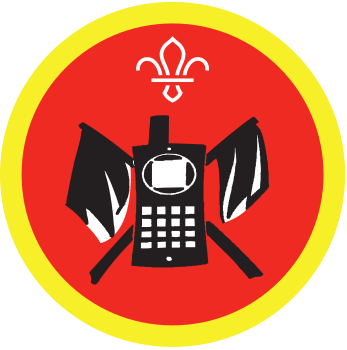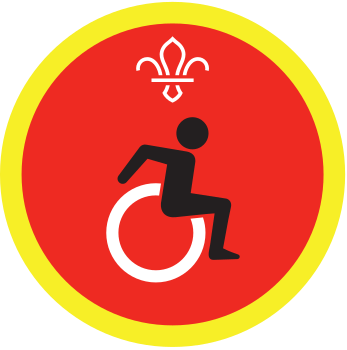
Learn to fingerspell your name
You’ll need
- Device with access to the internet
- Copies of the fingerspelling alphabets (optional)
- Access to a printer (optional)
To watch in full screen, double click the video
Before you begin
- Use the safety checklist to help you plan and risk assess your activity. There's also more guidance to help you carry out your risk assessment, including examples.
- Make sure all young people and adults involved in the activity know how to take part safely.
- Make sure you’ll have enough adult helpers. You may need some parents and carers to help.
Planning and setting up this activity
- Download (and print out, if needed) enough copies of the right handed and left handed fingerspelling alphabets, and ‘Hello, my name is’ sheets.
- One copy between two or three people is usually fine. You could laminate the sheet to make it easy to clean.
Running this activity
Practising your fingerspelling
- Everyone should get in a circle with copies of the BSL fingerspelling alphabet. Ask if anyone knows what finger spelling is or has done it before.
- Explain that fingerspelling is a method of spelling words using hand movements. The fingerspelling alphabet is used in sign language to spell out names of people and places for which there's not a sign for. Fingerspelling can also be used to spell words for signs that the signer doesn't know the sign for, or to clarify a sign that's not known by the person reading the signer.
- Tell everyone that fingerspelling is used in British Sign Language (BSL), which is what you'll be using. BSL uses a two-handed alphabet however some other sign languages, such as American Sign Language (ASL), use a one-handed alphabet.
- Using the BSL fingerspelling sheets, the whole group should practice their alphabet together. A confident adult or young leader can show everyone how to make a letter, and then the group can copy.
- Once the group has practised the alphabet together, everyone should take a few moments on their own to practise fingerspelling their name.
- Now, get back in a circle, and practise signing ‘Hello, my name is’.
- When everyone’s ready, put the ‘Hello my name is’ and the fingerspelling of their name together. Now, they can introduce themselves, and understand someone else telling them their name.
- Everyone should get into small teams and sign their names to each other. They could also sign the alphabet.
- Now, once people know their names, everyone should try and put some of the letters together to make short words. They should start with simple words, such as ‘cat’ or ‘home’.
Testing your fingerspelling
- Once everyone is confident, you could try hosting a spelling bee. However, instead of verbally spelling words, players must fingerspell the letters. Ask everyone to get into teams. One person from each team should play in each round. The last person standing in each round wins a point for their team. You could have different categories, such as names, colours, shapes, animals, trees, films, songs, countries, foods, numbers and so on.
- An alternative version is for players get in a circle and pass a soft ball while music plays. When the music stops, the person holding the object must fingerspell their name or a word provided by the person leading the activity. If they hesitate for too long or make a mistake, they’re out. The last person in the game, wins.
What’s sign language?
- Sign language is a visual means of communication.
- It’s used by some people who are D/deaf, or who have hearing impairments. It’s also used by people with a range of learning and communication difficulties, people developing their language and literacy skills, and people looking after young children.
- Evidence suggests that gestures develop earlier than speech, so some people teach young children signs to help them communicate before they can talk.
- Not all D/deaf people use sign language, and not everyone who uses sign language is D/deaf.
Types of sign language
- British Sign Language (BSL) has its own grammar, structure, and syntax. This means that the words aren’t necessarily in the same order as they are in spoken English.
- Makaton uses signs and symbols to support speech. You speak while you sign, so you sign words in the same order as in spoken English. You may recognise Makaton as it’s the sign language used in the CBeebies TV programme, Something Special.
- Other countries have their own sign languages and they can be very different to BSL.
Sign language in the UK
- Around 145,000 people in the UK use BSL. There are lots of different estimates depending on whether BSL is someone’s first language.
- BSL is a recognised minority language in the UK. It’s been recognised since 2003.
Reflection
This activity helped you to develop your communication skills. Is it important to be able to communicate in a variety of ways? Can you remember who might use fingerspelling or sign language? Do you think fingerspelling is a useful skill? Was it easy to understand when people were using signs or fingerspelling? When else might sign language be useful? How is sign language different to other ways of communicating?
This activity also helped you to learn to respect others, regardless of their background. What do you think it feels like to speak a language not many other people understand? Do you think it makes life more difficult when people don’t speak the language you use? What could your group to change this – do you think it’s important to try to learn some basic words and phrases? How might that change things for people who use sign language?
Safety
All activities must be safely managed. You must complete a thorough risk assessment and take appropriate steps to reduce risk. Use the safety checklist to help you plan and risk assess your activity. Always get approval for the activity, and have suitable supervision and an InTouch process.
- To make this activity easier, you could let people have the fingerspelling sheets in front of them during the spelling bee.
- To make this activity harder, if everyone is confident, you could see who can sign the alphabet in the fastest time.
Make it accessible
All Scout activities should be inclusive and accessible.
You could use British Sign’s vocabulary sheet creator to build new sentences or phrases to try. Why not try our Silent Sprint activity to test your fingerspelling too?

